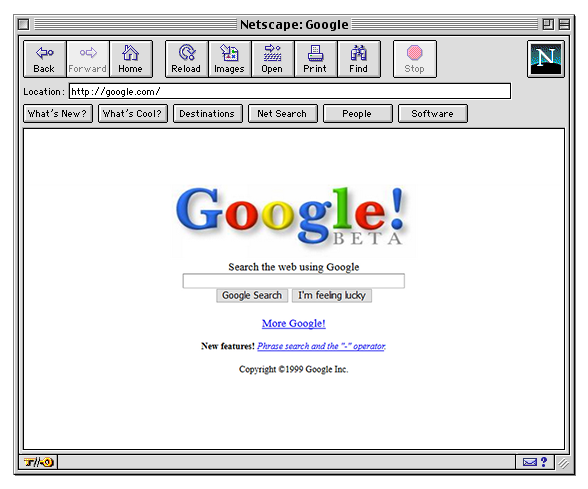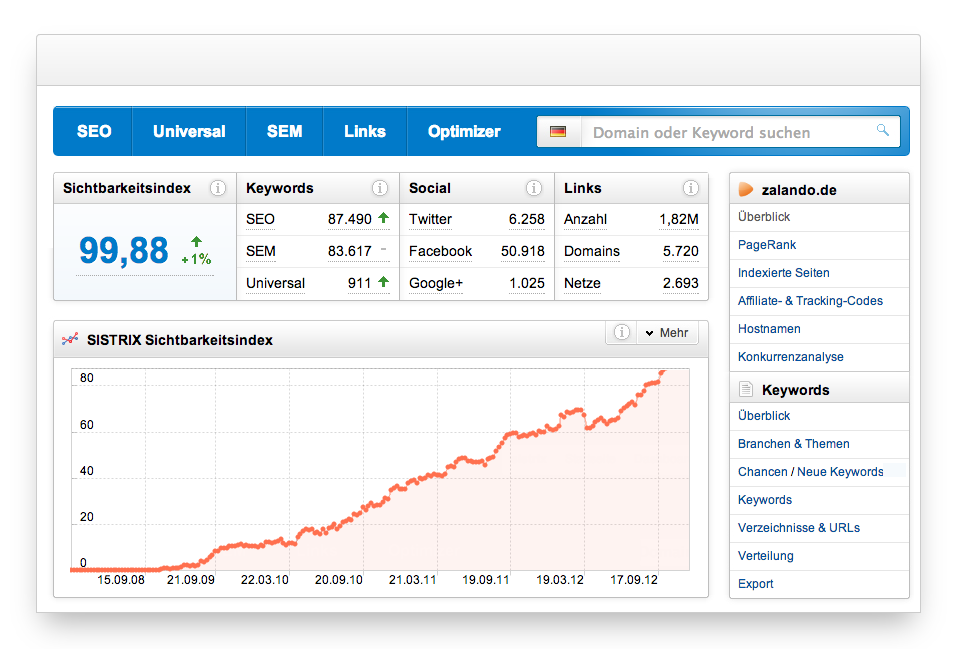The heart-piece of the SISTRIX Toolbox turns 10! The 25th of February 2008 marked the invention of the SISTRIX Visibility Index. For the past ten years this data collection has led to reliable visibility data not only for Germany.

10 Years! Enough of a reason for us to take a look to the past: How has the Internet in general and the Toolbox specifically changed our daily work routines? Which were the humble beginnings of our SEO-Tool used by so many?
SEO – a Neverending Story
Let’s go back to a time, in which you had masses of Keywords white on white, hidden on your page in order to “trick” searchengines and cheat your way to good rankings. It was a time, in which you would manually create excel-tables to keep an eye on your rankings – by hand! – and Searchengineoptimization was still in its infancy.
This was also the time that Johannes Beus set out to supplement his own way of working with a new data basis. Collecting and charting too few, and occasionally the wrong, keyword positions did not make for a dependable assertion of whether a website was successful or unsuccessful in Google’s results. Speaking of reliable SEO-evaluations or even -strategies was out of the question.

The idea that Johannes came up with was that you could regularly monitor a large number of keywords and turn the results into an index value. Out of pure necessity for his own work, instead of it being business idea, Johannes set up an automatic monitoring of the first 100 Google results for 1.000 keywords back in 2007.
And so, the prototype of the SISTRIX Visibility Index was born – at the time of its inception it started with another name, that many of you are also familiar with today: IndexWatch. SEOs and other interested parties were suddenly able to check the ranking changes for a website from one day to the next, at no cost whatsoever.
In a space where, until that time, more room was taken up by speculation and personal opinions instead of verified insights, the IndexWatch became a welcome alternative!

With the increasing use and acceptance of the results, it was possible to increase the data basis for the index further. SISTRIX founder Johannes Beus increased the number of keywords that were monitored, so that he could cover the average search behaviour for Germany and also started wheighting the importance of individual keywords as well as bringing additional metrics into play.
This improved Visibility Index, as we know it today, was first introduced in 2008. Followed shortly thereafter by the SISTRIX Toolbox and a host of excited SEO-followers who could now work with a valid index value.
Visibility Index Milestones
- February 25, 2008: The beginning of data collection for the SISTRIX Visibility Index
- September 13, 2010: Visibility Index available for the Spanish, French, Italian and Great Britain markets
- 2011: Introduction of the Visibility Index for Austria and Switzerland
- March 17, 2015: Introduction of our Smartphone Visibility Index – even before Google announced mobile as an official ranking factor
- 2015: Visibility Index available for the Polish, Brazilian, Swedish, Turkish and Netherlands markets
- 2016: Launch of our Amazon-Keyword-Tool and the Amazon Visibility Index
- September 7, 2016: the SISTRIX Toolbox is the only SEO-Tool to offer daily Visibility data in Germany
SEOs on the Visibility Index
An SEO-Tool is only good, if it is used regularly. We asked well known German SEOs what the Visibility Index means for their work:
 | “The Visibility Index has doubtlessly become a central metric for the success of your own work.” – Sebastian Erlhofer |
 | “The Visibility Index is a true SEO innovation from Bonn, Germany, which has revolutionised the entire international market. I will nearly always take a look at the SISTRIX Visibility Index of a website, when I want to get a feel for the site I am analysing.” – Andre Alpar |
 | “The Visibility Index can be tremendously helpful, when you are estimating the ranking power of a website, at a glance. The fact that SISTRIX has been gathering data for 10 years now is extremely useful as you can draw valuable conclusions from the historic data.” – Prof. Dr. Mario Fischer |
 | “Thanks to the first public Visibility Index, SEO became a little more democratised and now nearly everyone is able to check if their SEO activities are effective and gain valuable insights compared to their competition.” – Philipp Klöckner |
 | “The SISTRIX Visibility Index has had a lasting impact on the SEO industry. From its inception on, it has been an important KPI during competitor evaluations and estimating a domains findability on Google.” – Oliver Hauser |
 | “The SISTRIX Visibility Index has become an indispensable early-warning-system for many optimization projects. Thanks for keeping me from going grey. Thank you for 10 years Visibility Index!” – Florian Stelzner |
Trivia
- The exact keywords that are used for the Visibility Index is proprietary information, to this day. For our ten year anniversary, we make the first five public:
- abdeckplanen
- abendkleider
- abitur
- abnehmen
- adidas
- The pricing for the Toolbox was decided on in a Mexican restaurant in Cologne, Germany – on a napkin to be exact. And those prices have not changed since that dinner in 2008.
- The current version of the Toolbox (February 2018) has version number 71.811.
- It all started back in 2003 (!) with the first blogpost on sistrix.de
The Next Ten Years
Making complex circumstances comprehensible – the Visibility Index has been able to do exactly that over the past 10 years and established itself as the gold standard for measuring success. This does not mean that the Visibility Index has to be rigid, just as markets can change, so will the Visibility Index adjust to those changes.
Things that are true today, may already be outdated tomorrow, in our fast paced industry. This means that other things may and will become interesting over the next 10 years. Let’s wait and see. We are ready!
10 Years Helping People Make the Right Decisions!
What does 10 years SISTRIX Visibility Index mean for you? Let us know!
